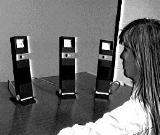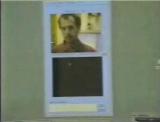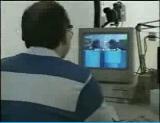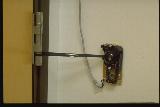| Door Mouse
(1 min. 10 sec.) University of Toronto 1990 |
This is work done by my student
Andrea Leganchuk. Sadly, she never published it. "Doorstates"
and the doormouse are an early example of "ambient intelligence", or what
we call "proximal sensing," or "reactive environments." The problem
addressed is this, when you have the "infomration highway right to your
door, how do you control access and availablity?" Our general design
philosophy was, whenever posible, use the same social protocols for virtual
visitations as for physical ones. Hence, if my door was the prime
cue to communicate my accessibility to someone in the physical corridor,
then let that same physical door be the mechanism to communicate my accessibility
to those coming down the virtual corridor. Hence, Andrea's wonderful
solution was to instrument my physical door with the guts of a second
mouse that was connected to my computer, and then drove the resulting application,
"Doorstates."
Ref:
|
|
 |
Hydra
(4 min. 11 sec.) University of Toronto 1992 |
This video demonstrates the use
of what could be called "video surrogates" to afford the use of spatial
cues that are found in face-to-face conversation, and which support gaze
awareness, turn taking, and parallel conversations.
Ref:
|
 |
"Extra Eyes"
(1 min. 53 sec.) University of Toronto 1995 |
Most video conferencing systems focus on
the remote person or object that are central to the purpose of the meeting.
In comparison to same-place meetings, one has very little sense of the
background or periphery. This system shows one approach of maintaining
an awareness of both the foreground and the periphery.
Ref:
|
 |
ConEd: Video Conversation Analysis
Tool
(1 min. 24 sec.) University of Toronto 1992 |
This is a brief demonstration
of some of the techniques that we developed as part of the Telepresence
and Cavecat projects to analyse data recorded on audio and video
tape. It is of additional interest in that it was one of the first
applications into which we incorporated radial or "marking" menus.
Ref:
|
